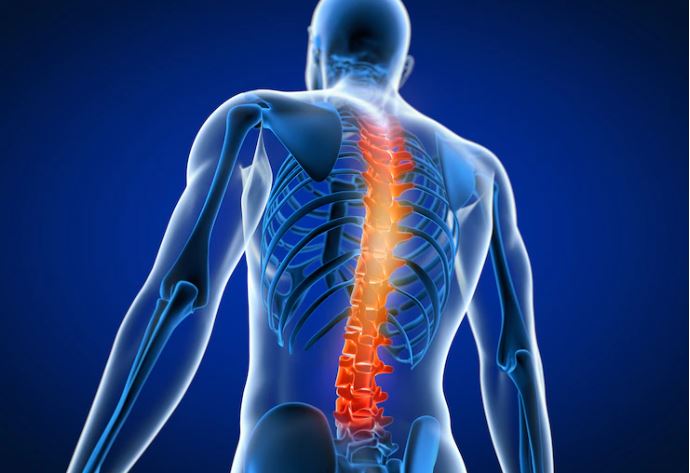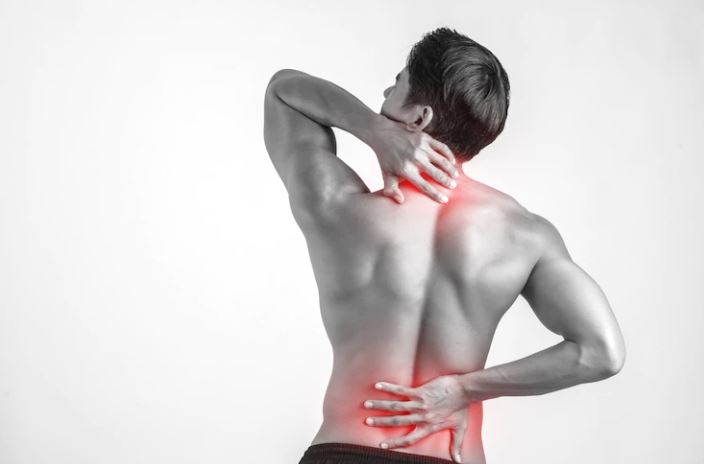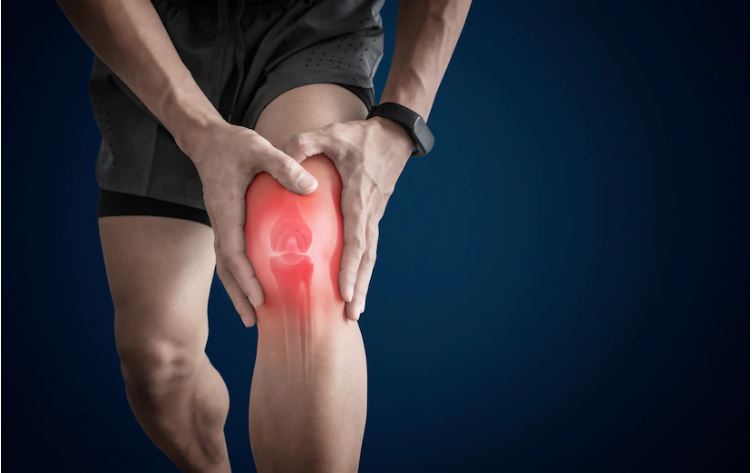In this post, we unravel the intricate differences between bone pain and muscle pain. In fitness and bodybuilding, understanding these nuances is beneficial and essential for optimizing your training regimen and ensuring peak performance.
Today, we delve deep into the core of this topic, exploring the distinct sensations, causes, and treatment approaches for bone pain versus muscle pain.
Throughout this journey, we’ll navigate through various subtopics, from identifying the root causes of each type of pain to exploring the best supplements for muscle pain and stiffness. We’ll debunk myths, provide practical insights, and give you the knowledge to distinguish between these often-confusing signals your body sends.
So, whether you’re a seasoned athlete, a fitness enthusiast, or someone simply curious about the mechanics of pain in the body, buckle up as we embark on a journey to decode the mysteries of bone pain and muscle pain. By the end, you’ll be equipped with invaluable insights to elevate your fitness journey and conquer any obstacles.

What Causes Bone Pain?
Bone pain can stem from everyday bumps like fractures or overuse injuries in athletes. However, underlying health issues can also be at play. Osteoporosis weakens bones, while arthritis inflames surrounding tissue, leading to discomfort.
Even infections like osteomyelitis in the bone marrow can trigger significant pain. Remember, this is not an exhaustive list, and consulting a healthcare professional is vital for accurate diagnosis and proper pain management.
Some common causes of bone pain include:
- Rheumatoid arthritis is an autoimmune disorder that can cause joint pain and stiffness.
- Fractures: A broken bone can cause severe pain and require medical attention.
- Osteoporosis is when the bones weaken, increasing the risk of fractures.
- Bone cancer: Certain types of cancer can cause pain in the affected bone.
- Stress fractures: Repetitive motions or overuse can cause small cracks in the bone, leading to pain.
What Causes Muscle Pain?
Muscle pain often stems from overuse. Strenuous activities, unfamiliar tasks, or even repetitive motions can lead to microscopic tears and inflammation, causing the familiar soreness. Improper form, inadequate warm-ups, or dehydration can worsen this ache.
Injuries like strains or tears can also trigger significant pain, while underlying medical conditions may contribute to persistent discomfort.
Understanding the potential roots of pain empowers us to prevent it and find effective treatment.
Some common causes of muscle pain include:
- Muscle strain: Overstretching or tearing a muscle can cause pain and discomfort.
- Sports injuries: Twisting or overstretching a joint can cause a sprain, which can cause pain and inflammation.
- Fibromyalgia: This is a chronic pain disorder that affects the soft tissues.
- Lyme disease is a bacterial infection that can cause muscle pain and fatigue.
Pinpointing Your Ache: Distinguishing Bone Pain from Muscle Pain
Muscle aches and bone pains can disrupt daily life, but understanding their differences can guide you toward proper diagnosis and treatment. Here are three key points to help you differentiate the two:
Location and Intensity:
- Muscle pain: Muscle pain is often characterized by a dull, achy sensation spread over a larger area. This type of pain can be triggered by physical activity and is known to improve with rest and stretching.
- Bone pain: Bone pain is a sharper, deeper, and more localized sensation, often resembling a pinpoint. It can persist even when the affected area is at rest and can intensify with movement or pressure.

Duration and Persistence:
- Muscle pain: In most cases, the symptoms can be alleviated within a few days or weeks by taking adequate rest and practicing self-care measures.
- Bone pain: Sometimes, specific medical symptoms can continue for prolonged periods, which may require a medical evaluation to rule out any underlying conditions. If left untreated, these symptoms may worsen and cause further complications.
Associated Symptoms:
- Muscle pain: An individual can experience muscle fatigue, weakness, stiffness, or soreness with a particular condition or illness. These symptoms can occur for various reasons, such as overexertion, lack of hydration, or underlying medical issues. It is essential to stay aware of these symptoms and seek medical attention if they persist or worsen.
- Bone pain: When a certain part of our body gets injured or affected, it may exhibit various symptoms, such as swelling, redness, bruising, numbness, or tingling sensation. The type and severity of symptoms may vary depending on the cause of the injury or condition. It is essential to seek medical attention if any of these symptoms appear to ensure proper diagnosis and treatment.
What Are the Symptoms of Bone Pain Versus Muscle Pain?
Distinguishing between bone and muscle pain can be tricky, as both can cause discomfort and limit movement. However, some critical differences in their symptoms can help you understand what might be causing your pain and seek appropriate help.
Bone pain: Often feels deeper, sharper, and more localized than muscle pain, like a pinpoint in the bone. It may be present even at rest and worsen with movement or pressure. The pain can radiate outwards but typically has a clear source.
Additionally, bone pain tends to persist for extended periods, lasting weeks or even months. It may be accompanied by swelling, redness, bruising, or even numbness or tingling, depending on the cause.
Muscle pain: Typically manifests as a dull, achy sensation spread over a larger muscle area. It’s often triggered by overuse or strain and frequently improves with rest, stretching, or gentle activity.
Muscle pain usually feels less intense than bone pain and doesn’t worsen significantly with movement. Associated symptoms might include muscle fatigue, weakness, stiffness, or soreness.
What Are Some Common Treatments for Bone Pain and Muscle Pain?
While bone and muscle pain can disrupt daily life, the treatments differ depending on the source. Here’s a breakdown of some common approaches for each:
Treatment for Bone Pain

Treating bone pain hinges on pinpointing the underlying cause effectively. Immobilization with casts or braces is crucial for fractures, while stress fractures often require rest, ice, and elevation.
Osteoporosis-related pain benefits from bone-building medications and lifestyle changes like weight-bearing exercise and calcium-rich diets. Arthritis pain may respond to over-the-counter pain relievers or prescription medications combined with physical therapy to improve joint flexibility and strength.
Infections like osteomyelitis necessitate antibiotic treatment. Ultimately, the most common treatment for bone pain is addressing the root cause, and a healthcare professional can guide you toward the most appropriate course of action for your specific case.
Treatment for Muscle Pain
Muscle pain, while often temporary, can significantly impact your daily life. Thankfully, several common treatments can offer relief and promote healing.
The first line of defense is frequently rest and self-care. This allows the muscle to recover and reduces further strain. Applying heat followed by ice can initially help manage inflammation.
At the same time, gentle stretching and strengthening exercises once the pain subsides can improve flexibility and prevent future issues. Over-the-counter pain relievers like ibuprofen or acetaminophen can also provide temporary relief.
Massage therapy can be another valuable tool, promoting blood flow, reducing muscle tension, and aiding relaxation.
Top Supplements for Alleviating Muscle Pain and Stiffness
This section will explore various supplements that effectively alleviate muscle pain and stiffness.
Magnesium
Magnesium is an essential mineral that contributes to muscle function and relaxation.
According to studies, there is a potential connection between magnesium deficiency and muscle cramps. Therefore, adding magnesium supplements to your diet is recommended, with a daily intake of around 200-400mg.
Opt for easily absorbable forms such as magnesium citrate or glycinate is advisable for better results.
Omega-3 Fatty Acids
Omega-3 fatty acids are essential polyunsaturated fats that benefit our overall health.
Consuming fats found in fish and flaxseed oils can have anti-inflammatory effects known to alleviate muscle soreness and stiffness. Taking supplements containing at least 500mg of EPA and DHA combined daily is recommended to experience the benefits.
Tart Cherry Concentrate
Suppose you want to reduce muscle soreness and improve your recovery after a strenuous workout. In that case, it might be beneficial to incorporate natural sources of antioxidants and anti-inflammatory compounds like anthocyanins in your diet.
These compounds can help to neutralize harmful free radicals in the body, which can cause inflammation and damage to cells. To reap the most benefits, you should look for supplements that contain at least 50mg of anthocyanins per serving.
Doing so can give your body the support it needs to recover quickly and effectively.
Turmeric
Due to its numerous medicinal properties, Turmeric is a well-known spice used in traditional medicine for ages.
Its primary active compound, curcumin, is known to have anti-inflammatory and pain-relieving effects that can help manage various health conditions. However, the human body’s ability to absorb curcumin is limited, and it gets metabolized quickly, reducing its efficacy.
Consuming supplements containing black pepper, which has piperine, is recommended to overcome this.
This natural substance can increase curcumin’s absorption by up to 2,000%.

In addition to maintaining a healthy diet and regular exercise, practicing good posture is essential, as poor posture can unnecessarily strain the bones and muscles. Additionally, it’s essential to get enough sleep and manage stress levels, as lack of sleep and high levels of stress can increase the risk of pain and injury.
Conclusion
Understanding the differences between bone and muscle pain is essential to correctly diagnose and treat the problem. While both types of pain can be debilitating, they have different causes and require different types of treatment.
Suppose you are experiencing pain, especially with unexplained weight loss, and are unsure of the cause.
In that case, consulting with a healthcare professional to determine the best course of action is essential.
Maintaining a healthy diet, regular exercise, good posture, getting enough sleep, and managing stress can also help prevent and reduce bone and muscle pain risk.








